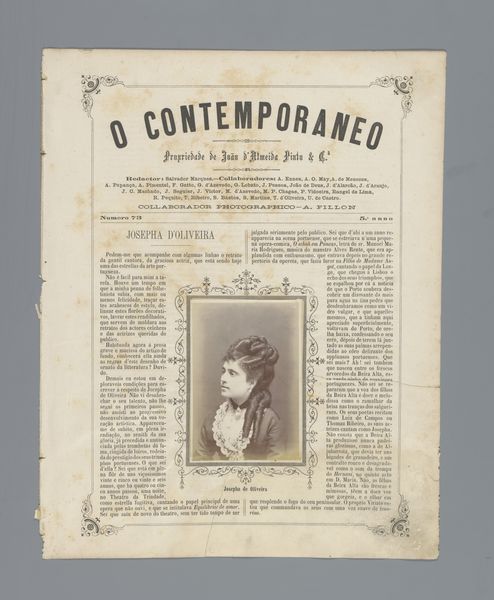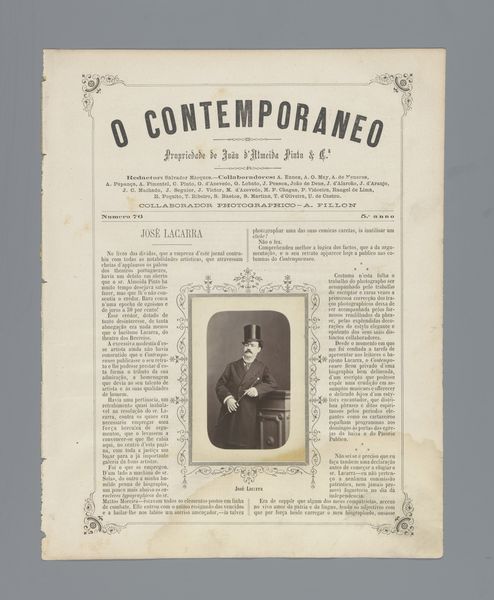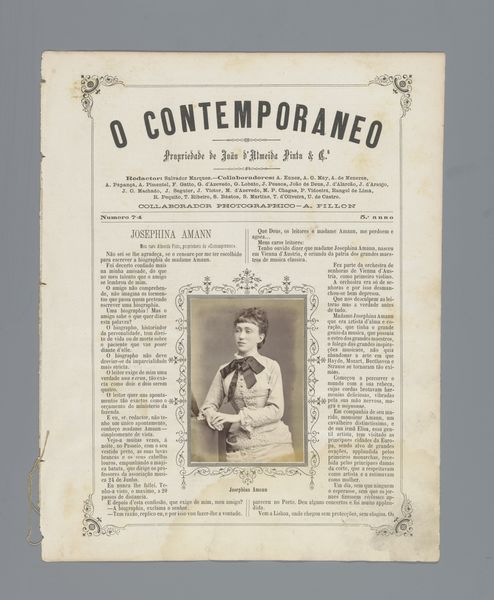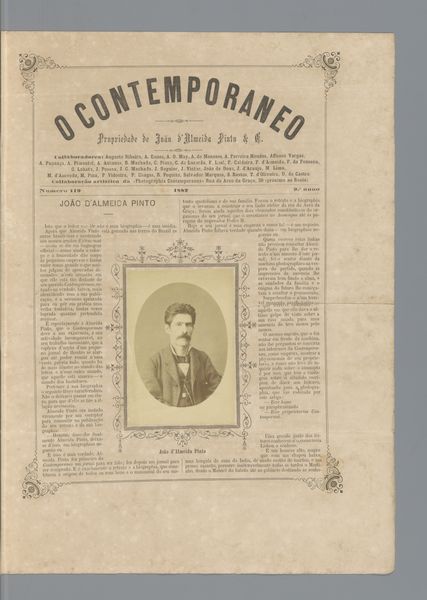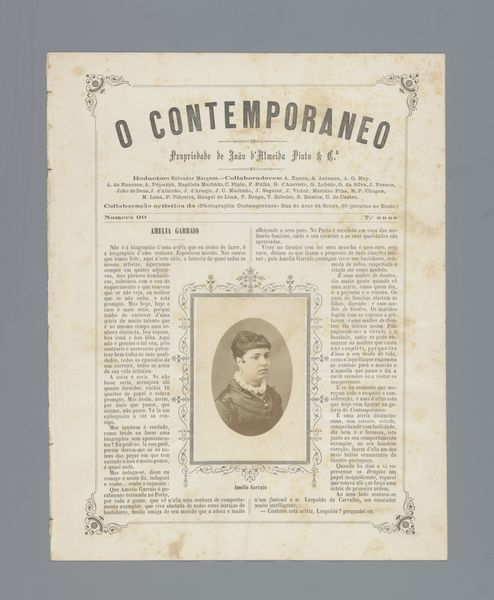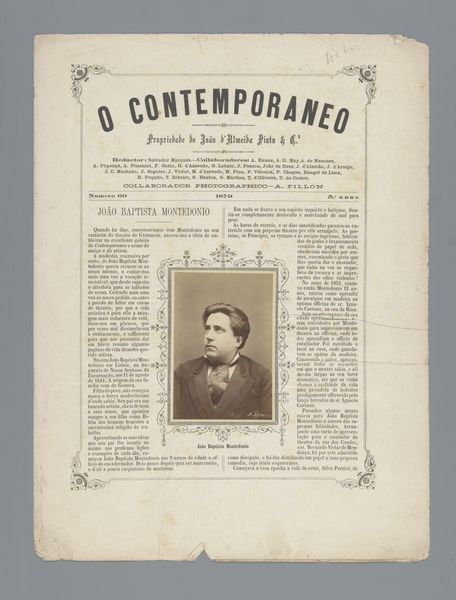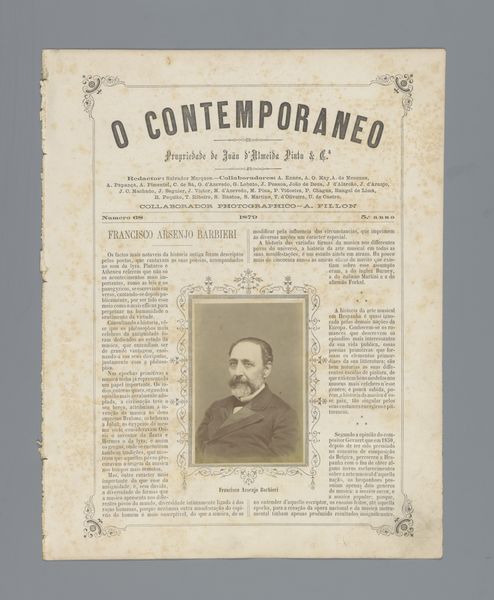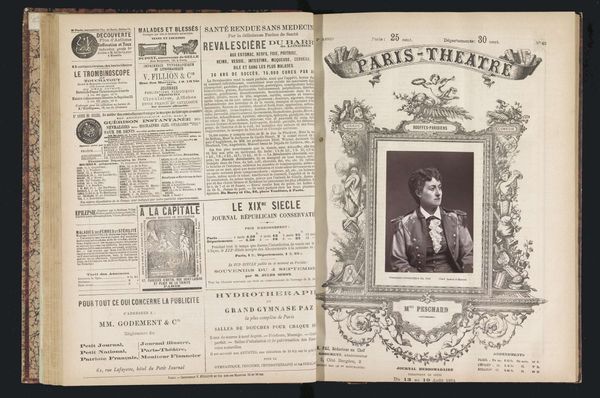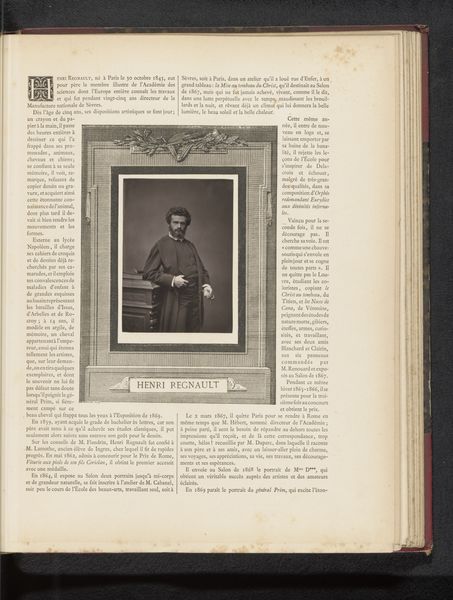
print, photography
#
portrait
#
still-life-photography
# print
#
photography
Dimensions: height 320 mm, width 240 mm, height 107 mm, width 69 mm
Copyright: Rijks Museum: Open Domain
Curator: This piece, simply titled "O Contemporaneo," is a print that showcases still-life photography and portraits, originating sometime before 1876 and bearing the signature of Alfred Fillon. Its monochrome tones are immediately striking. Editor: Yes, it's austere and quite lovely! The composition centers on a striking female portrait framed by dense text; the subdued tonality and ornate typography evoke a sense of formal restraint. The subdued aesthetic projects seriousness. Curator: I would agree, although there's so much to unpack within the social context. What roles did portraiture and printing play in circulating images of women, for example? Note the specific ways Adelina Dupuy, an actress, is positioned in relation to commerce, science and the arts. The magazine's collaborators appear at the top. I’d also point out the printing process itself: How does this object participate in making the world available as images and text? Editor: From a visual perspective, consider the symmetrical framing and how the gaze of the woman in the portrait invites us in. The image of the sitter herself, Adelina Dupuy, creates a visual focus despite being surrounded by all the text; and it creates tension with all of the framing information. The placement reinforces this figure’s importance but also shows the complex machinery surrounding her “image” production. The way light dances around the face adds dimensionality and enhances its intrinsic grace. Curator: I appreciate your observation of Dupuy's portrait! But the whole object here is important to understand the context surrounding this actress—it suggests something crucial about celebrity culture and performance. Think about the labor that has gone into producing the magazine in its entirety: What processes of consumption does this object perform, and who can afford it? Editor: I admit, I get caught up in details! The visual economy created through her graceful image makes her seem important, perhaps even setting new paradigms. The semiotics employed work beyond just commerce by conveying what is inherently sophisticated, fashionable and aspirational. Curator: Indeed, those concepts are crucial components of understanding how power structures operated within the context of 19th century print and the production of social class. I am very happy with that reading, however—great analysis! Editor: And I with yours—such nuance that makes us pause to examine even commonplace magazine portraits.
Comments
No comments
Be the first to comment and join the conversation on the ultimate creative platform.


